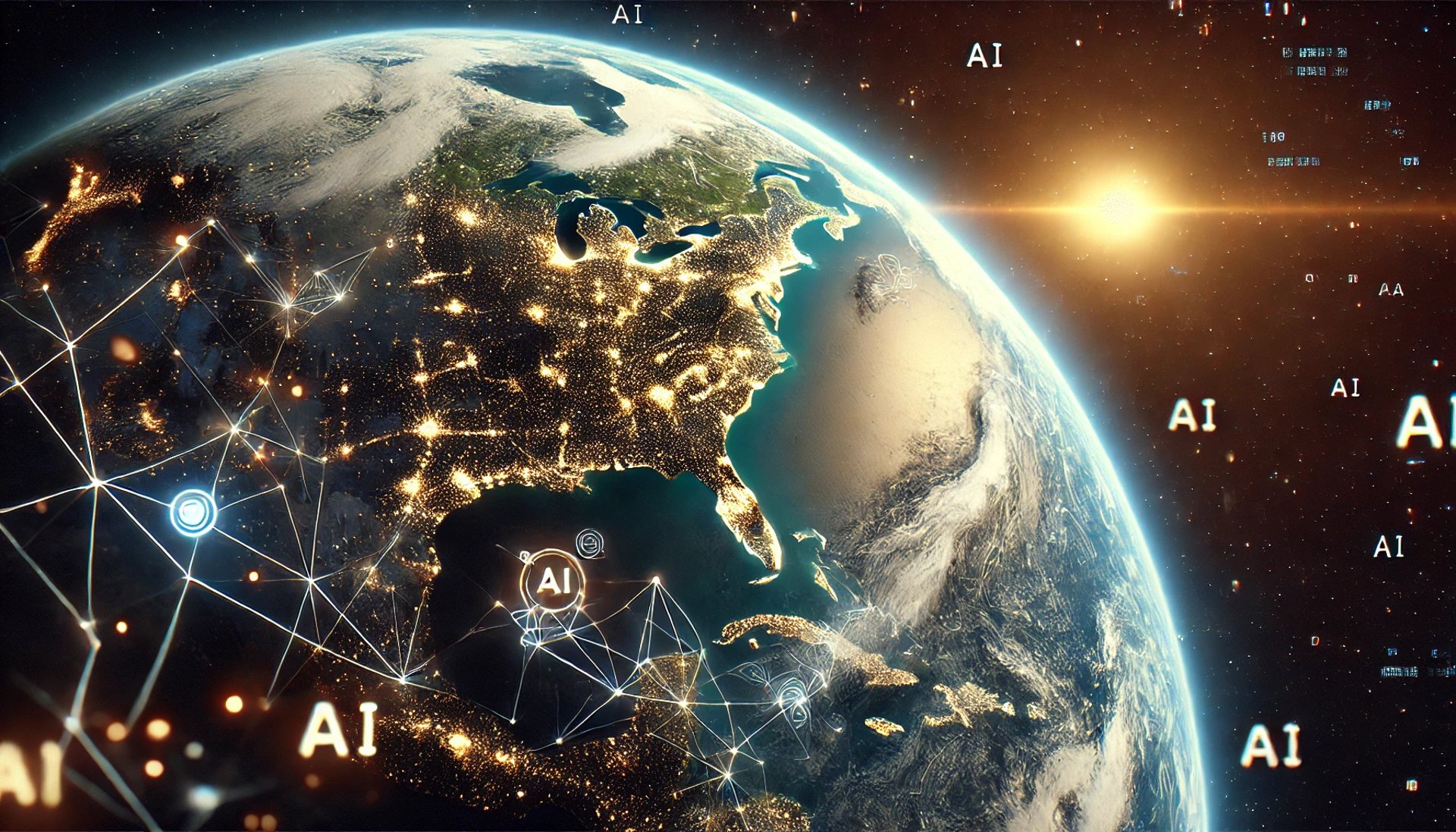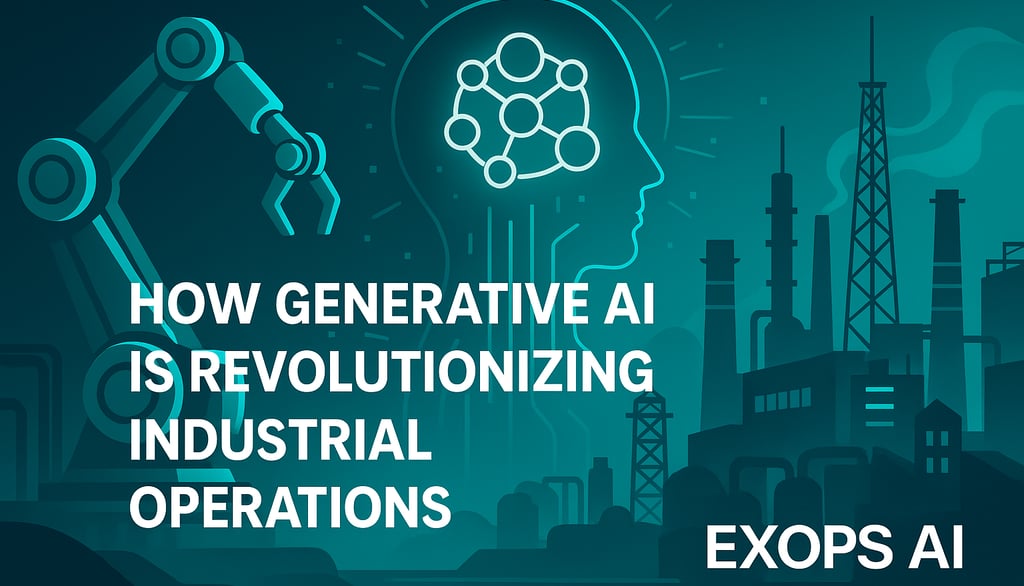
How Generative AI Is Revolutionizing Industrial Operations
A concise overview of how generative AI is transforming industrial operations—cutting analysis time from hours to minutes, preventing costly errors, and scaling expertise through conversational tools—plus a look at future trends and practical steps to pilot AI in your workflows.
USE OF GENERATIVE AI
EXOPS AI
5/19/20253 min read



In today’s hyper-competitive industrial landscape, companies face relentless pressure to do more with less—reducing downtime, preventing costly errors, and accelerating decision-making. Traditional automation and analytics have delivered incremental gains, but a new wave of generative AI promises to unlock transformative efficiency by embedding domain expertise into conversational tools.
1. From Data Overload to Instant Insights
The Challenge: Plants, rigs, and logistics networks generate terabytes of data every day—from sensor streams and maintenance logs to environmental readings and regulatory checklists. Sifting through this information to extract actionable guidance can take hours or days, relying on specialized engineers and complex scripts.
The AI Advantage: Generative AI models, fine-tuned on industrial best practices, can parse multiple data sources in seconds. You simply describe your scenario in a chat interface— “What’s the optimal maintenance schedule for this pump given its vibration history?”—and receive tailored recommendations grounded in standards like ISO 55000 or API 53. This “instant expertise” slashes research time from hours to minutes and reduces reliance on scarce subject-matter experts.
Time Savings Example:
Manual Analysis: 8 hours to compile failure logs, filter anomalies, and draft a maintenance plan.
Generative AI: 5–10 minutes of conversational prompts yields a draft schedule with risk flags and parts recommendations.
Real-World Impact: A single AI-assisted maintenance cycle can free up 7.5 hours per engineer—over 390 hours annually per technician.
2. Error Prevention and Compliance Enforcement
The Hidden Cost of Mistakes: In many industrial settings, a single miscalculation or skipped compliance step can trigger weeks of shutdown, fines, or safety incidents. Traditional checklists and manual inspections are prone to human error—especially under stress or tight deadlines.
AI-Driven Validation: Generative AI can automatically validate inputs (well parameters, material specifications, audit responses), flagging inconsistencies before they snowball. By codifying regulations and engineering rules into conversational agents, you:
Catch Errors Early: Immediate feedback on out-of-tolerance values or missing documentation.
Enforce Consistency: Every user follows the same standardized protocol, reducing audit variability.
Accelerate Approvals: Generate formatted reports and compliance summaries on demand.
Cost Avoidance Example:
Typical Penalty: A late environmental audit can incur $20,000–$50,000 in fines.
AI Intervention: Automated pre-audit checks eliminate 90% of common omissions.
ROI: Preventing even one fine per year can justify the AI investment many times over.
3. Scaling Expertise Across the Organization
The Training Bottleneck: Onboarding new engineers or operators often involves weeks of classroom training, shadowing, and hands-on exercises. This slows project ramp-up and strains existing staff.
Conversational Learning: AI assistants serve as 24/7 on-the-job trainers, guiding new hires through complex tasks step by step:
Scenario-Based Q&A: “How do I configure the digital twin for a subsea blowout preventer?”
Interactive Walkthroughs: Dynamic prompts adapt based on user inputs.
Contextual Memory: The AI “remembers” prior chat context, ensuring continuity across sessions.
Scaling Impact: A single AI coach can onboard dozens of employees simultaneously, freeing senior engineers to focus on high-value innovation rather than basic training.
4. Looking Ahead: The Future of AI in Industry
Generative AI, already reshaping content creation and customer service, is poised for a similar upheaval in industrial operations. Key trends to watch:
Self-Optimizing Systems: AI agents that continuously monitor performance metrics and tweak control parameters in real time.
Predictive Collaboration: Cross-discipline AI “teams” that merge mechanical, electrical, and environmental data to forecast multi-system interactions.
Digital-Twin Democratisation: Lower-cost, AI-driven virtual replicas accessible to small and mid-sized enterprises, breaking down technology barriers.
Regulatory Co-Pilot: AI maintained on the latest standards (e.g., ISO, API, FDA) that auto-updates whenever regulations evolve.
By 2030, generative AI will be as ubiquitous on the plant floor as PLCs and SCADA systems—serving not just analysts, but every operator, technician, and manager.
5. Bringing AI Into Your Workflow Today
Start Small: Pilot a conversational AI tool in one high-impact area—maintenance scheduling, compliance audit prep, or digital-twin simulation.
Measure Rigorously: Track before-and-after metrics: hours saved, incidents reduced, and compliance pass rates.
Iterate Quickly: Use feedback loops to refine prompts, expand data integrations, and improve AI accuracy.
Scale Strategically: Once ROI is proven, roll out to additional sites, teams, or processes.
Generative AI isn’t a futuristic fantasy—it’s a practical toolkit you can adopt now to accelerate operations, mitigate risk, and empower your workforce with on-demand expertise. Ready to explore the possibilities? Stay tuned for more deep dives, case studies, and best practices right here with EXOPS AI.
Author: EXOPS AI L.L.C.
Contact: info@exopsai.io

